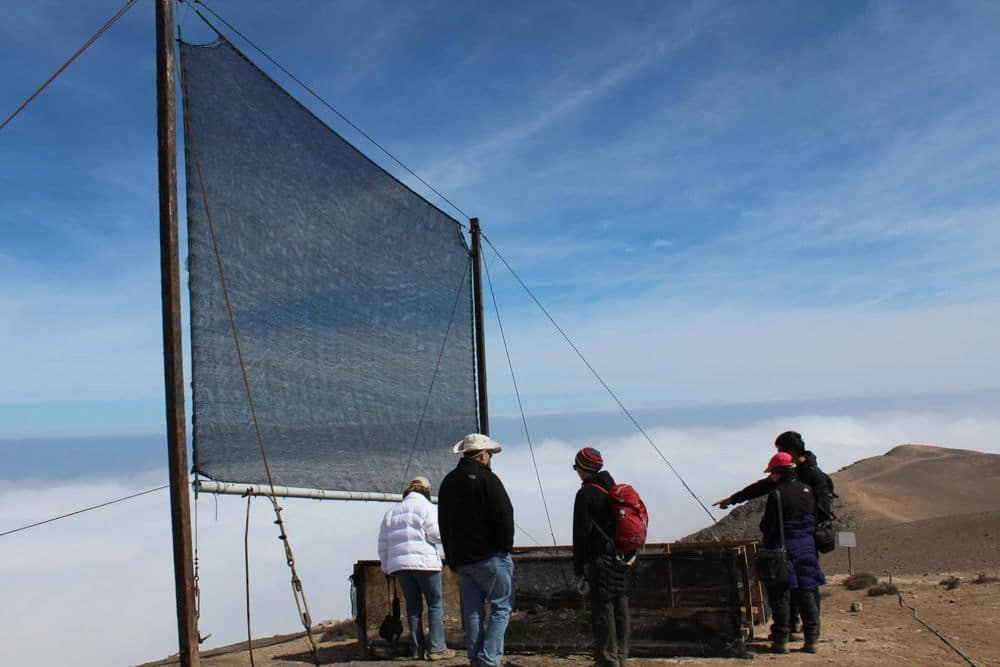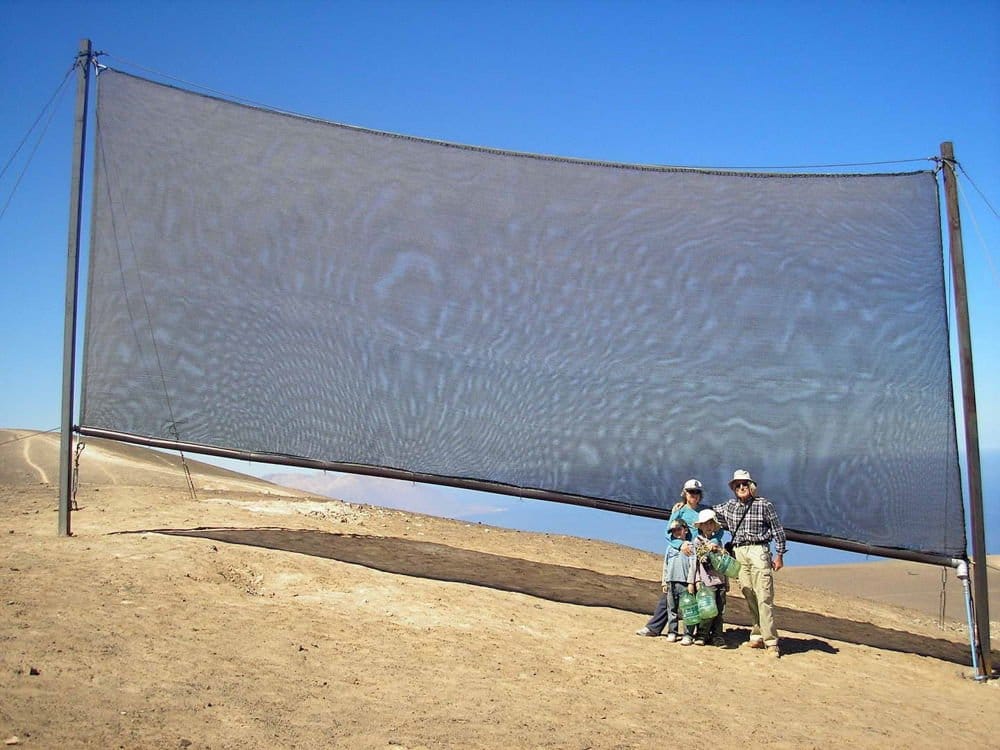With the expected population increase in mind and its growing concentration in the cities, a team of experts has designed AquaWeb; a system to capture water from rain and moisture, and manage it efficiently in urban crops, the evolution of the classic fog-trap. The secret to the success of innovation, keep in mind we took this from a Spanish site and sometimes words are conveyed in different ways we're pretty sure that they're not actually catching frogs but took the inspiration from frogs and called it a frog trap
Lima is the second driest city on the planet, its annual rainfall does not exceed 10 mm. The lack of water, as in most cases, is especially suffered by the poorest communities and families. About 1 million families in Lima do not have access to running water, in all of Peru there may be 10 million.
In the absence of "official" solutions, some began to look for alternative solutions. And this was the case of the Peruvian Engineer Abel Cruz Gutiérrez, who 14 years ago found a very clever solution to alleviate, as far as possible, the problem of lack of water. The solution is to catch the fog with its fog catchers, trapping the water drop by drop.
The idea is that the small drops of fog remain attached, thanks to the wind, in the nylon threads of the meshes (6 x 4 m) and then redirect them and accumulate them in tanks thanks to gravity. A system with which you can capture up to 350 liters of water daily. This water, although it is not suitable for human consumption, if it can be used for domestic tasks and cleaning, cleaning and irrigation.

The next step of Cruz is to be able to make the water of the catwalks drinkable and that the meshes can work all year round.
In addition to Peru, fog catchers are also used in Chile, in addition to other countries that are currently experiencing their use.

Moving forward with its innovation, another issue that the team had to solve was how to distribute the water once captured. Again, nature illustrated them. Specifically, in this case it was the mycorrhizal fungi that helped to continue shaping the system, given its importance to transport water and nutrients and contribute them to the nearby species that need them.
With all the above, to close AquaWeb's design, it was only necessary to find the solid structure that would give shape to the whole. And at this point it was the bees that gave the solution, since the system took as a model the hexagonal structures of honeycombs , both for their efficiency and for their modular design.
Thus, with these sources, the result has been a system that will allow urban producers to save energyand be much more resistant to any unforeseen event. Specially designed to provide water to urban growing areas, such as greenhouses, vertical gardens or production areas in containers, AquaWeb aims to respond to a challenge of great magnitude: that it is possible to guarantee food to a growing and increasingly concentrated population in cities.
Thus, the design and development of this system is based on forecasts such as the following: it is estimated that the population of the earth will rise to 9,000 million people in 2050, year in which, in addition, 7 out of 10 will reside in urban areas . How to produce safe and sufficient food in cities? And this is precisely the doubt that this team tries to alleviate with AquaWeb, which, according to its slogan, will provide "renewable water for sustainable food" . This is also closely related to atmospheric water trapping using salt to attract water. 1 video example; https://youtu.be/z36jMKk-AdQ
2 video example;
3 video examples;







No comments:
Post a Comment